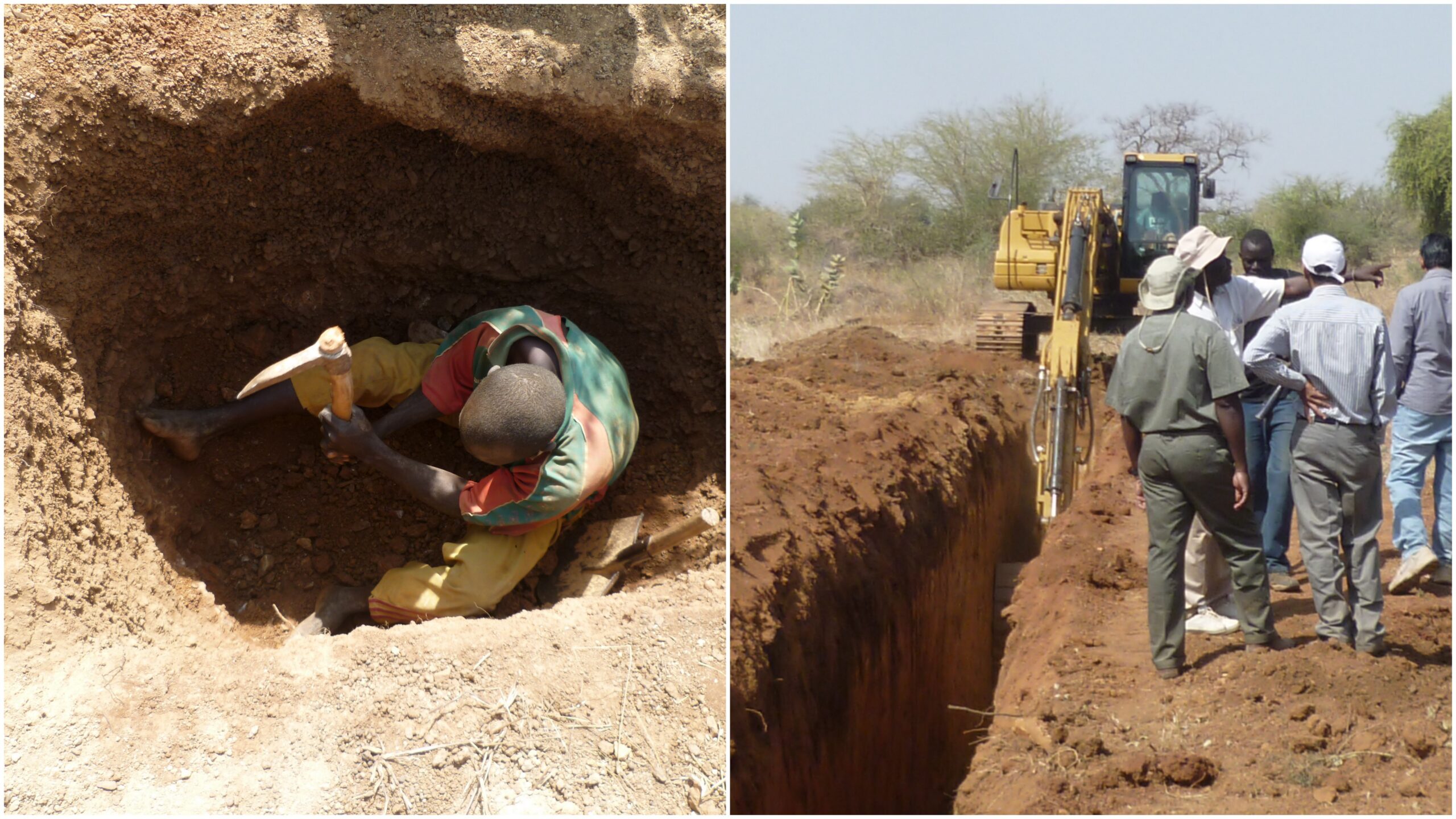Pitting and Trenching
Pitting and trenching are essential methods employed in geological and mining exploration to investigate subsurface geology and evaluate the presence of valuable minerals or geological formations. These techniques involve the excavation of shallow holes or trenches to collect geological data and samples.

Pitting:
Pitting refers to the process of digging small, shallow excavations or pits in the Earth’s surface to expose underlying geological layers. The following are key aspects of pitting:
Purpose: Pitting is typically used for preliminary exploration and geological mapping. It helps geologists gain insights into the near-surface geology and identify potential mineralization.
Excavation: Pits are relatively small and shallow, typically ranging from a few meters in diameter and depth. The excavation is done manually or with small machinery.
Sampling: Geologists collect samples of rocks and soils from the exposed layers. These samples are analyzed to determine their mineral content and geological characteristics.
Mapping: The exposed layers are often carefully documented and mapped to understand the geological context and the spatial distribution of geological features.
Trenching:
Trenching involves the excavation of larger and deeper trenches or channels in the Earth’s surface. Here are key aspects of trenching:
Purpose: Trenching is commonly used for more detailed exploration and evaluation of subsurface mineral deposits. It provides a clearer picture of geological structures and mineralization.
Excavation: Trenches are larger and deeper compared to pits. They can extend for tens to hundreds of meters in length and can reach depths of several meters. Heavy machinery is often used for excavation.
Sampling: Trenches expose a larger cross-section of the subsurface, allowing for extensive sampling. These samples provide valuable information about the mineral composition and continuity of geological formations.
Mapping: Geological mapping in trenching is more comprehensive, as it covers a larger area and provides insights into the spatial relationships between geological features.
Importance of Pitting and Trenching:
Mineral Exploration: Pitting and trenching are essential for identifying and delineating mineral deposits, helping mining companies make informed decisions about resource extraction.
Geological Understanding: These techniques contribute to a better understanding of the local geology, aiding in geological mapping and resource assessment.
Environmental Impact Assessment: Prior to mining activities, pitting and trenching help assess potential environmental impacts by characterizing the geological conditions.
Engineering and Construction: In civil engineering and construction projects, these techniques assist in assessing subsurface conditions, including soil types and stability.
Conclusion:
Pitting and trenching are integral techniques in geological exploration and mining. They provide valuable geological data and samples that are crucial for resource assessment, environmental impact assessment, and informed decision-making in various industries. By excavating and studying subsurface materials, these methods contribute to our understanding of the Earth’s composition and its potential mineral wealth.
